Occupational Safety Training for Operating Motor Graders
99,000 ₫
Note: The above price is calculated for one person and may fluctuate depending on the number of participants in the course and market dynamics. For more accurate pricing support, please refer to the pricing table or contact our consulting staff directly.
Occupational safety is an important issue when operating a motor grader and needs to be addressed promptly to ensure the health and safety of workers and enhance the reputation of businesses here. The Occupational Safety Training course is one of the effective solutions to raise awareness of how to prevent workplace accidents for workers when operating a motor grader.
Table of Contents
Toggle1. Overview of Grader Trucks
a. What is a Grader Truck?
A grader truck is a specialized vehicle used in construction and road works. It is also called a motor grader or land leveling machine. The primary function of a grader truck is to cut and level the ground to create a smooth and even surface, often used for roads or airports.
Grader trucks usually have a front blade that can be adjusted to create different slopes and curves on the ground surface. They also have large wheels for efficient movement over diverse terrains. Some graders also have pivoting capabilities for more precise work.

b. How Grader Trucks Work
The operation principle of a grader truck mainly involves using a blade to cut and level the ground surface. Detailed description of its working principle:
- Blade:
- Blade structure: The grader truck has a wide front blade, usually made of hard steel to efficiently cut and level the ground.
- Blade adjustment: The blade can be adjusted to change the cutting depth and tilt, allowing the grader to adapt to different terrains and specific tasks.
- Frame and wheels:
- Load-bearing frame: Grader trucks have a strong frame to withstand the pressure from cutting and leveling operations.
- Wheels: Large wheels provide stable movement across varied terrains. Some models can pivot for easier maneuvering.
- Control system:
- Main controls: The operator uses controls to adjust the blade depth and steer the vehicle.
- Blade control system: Adjusts the angle and tilt of the blade, determining how the ground is cut and leveled.
- Engine:
- Powerful engine: Graders are equipped with strong engines to provide sufficient power for heavy-duty work and challenging terrains.
- Hydraulic system:
- Hydraulic system: Provides hydraulic power to move and adjust key components like the blade and wheels.

c. Industries Using Grader Trucks
Grader trucks are primarily used in construction and roadwork. Key industries and applications include:
- Construction:
- Building residential, industrial, and infrastructure projects.
- Preparing ground surfaces for houses, buildings, and other structures.
- Creating and maintaining road slopes, especially for highways and national roads.
- Roadwork:
- Building and maintaining transportation networks.
- Creating smooth and safe road surfaces for improved traffic safety and driver comfort.
- Mining:
- Preparing land surfaces for mining operations.
- Leveling extraction areas for safer and easier access.
- Agriculture:
- In some cases, graders can be used to level land before planting or seeding.
- Industrial Processing:
- Preparing land before building factory infrastructure or processing sites.
- Waste Management and Environmental Projects:
- Leveling land during construction of waste treatment facilities and other environmental projects.
- Military:
- Used for land preparation and infrastructure construction in military projects.
2. Overview of Occupational Safety Training for Grader Truck Operation
a. What is Occupational Safety Training?
- Occupational safety training for operating grader trucks provides sessions to raise awareness of workplace accident prevention. Workers directly involved with grader trucks belong to Group 3.
- This training helps workers identify hazards, prevent risks, and reduce workplace accidents during operation.
REGISTER FOR OCCUPATIONAL SAFETY TRAINING
b. Training Duration
Initial safety training:
- Total training time is at least 24 hours, including exams.
- 8 hours theory on safety policies and labor hygiene laws
- 8 hours theory on basic occupational safety and hygiene knowledge
- 4 hours theory on specialized training content
- 2 hours practical training on specialized content
- 2 hours final theory exam
The safety training center schedules sessions according to workers’ availability. Typically, there are 6 sessions over 3 days if the company can provide continuous learning time.
Periodic safety training:
- Before the occupational safety card expires, workers must attend periodic safety training with a duration of at least 50% of the initial training.
Explanation: The total time for periodic safety training is at least 12 hours, including exams. After completion and passing the test, the safety card is reissued and renewed.
c. Training Content
| No. | TRAINING CONTENT | TRAINING HOURS | |||
| Total | Including | ||||
| Theory | Practical | Exam | |||
| I | Safety policies and occupational hygiene laws | 8 | 8 | 0 | 0 |
| 1 | Overview of legal regulations regarding occupational safety and hygiene. | 6 | 6 | ||
| 2 | Standards and technical regulations for occupational safety and hygiene. | 1 | 1 | ||
| 3 | Specific regulations from government agencies for construction, expansion, or renovation of facilities, and safety requirements for machines, equipment, and materials. | 1 | 1 | ||
| II | Basic knowledge of occupational safety and hygiene | 8 | 8 | 0 | 0 |
| 1 | Basic knowledge of workplace hazards and harmful factors. | 4 | 4 | ||
| 2 | Methods to improve working conditions. | 1 | 1 | ||
| 3 | Safety culture in production and business. | 1 | 1 | ||
| 4 | Rights and obligations of employers and employees; policies on occupational safety and hygiene; functions of safety networks. | 1 | 1 | ||
| 5 | Safety regulations, signs, instructions, use of protective equipment, first aid skills, and occupational disease prevention. | 1 | 1 | ||
| III | Specialized training content | 6 | 4 | 2 | 0 |
| Comprehensive knowledge of machinery, equipment, hazardous substances; risk analysis and management; safe working procedures. | 6 | 4 | 2 | ||
| IV | Final exam on occupational safety training | 2 | 2 | 0 | 0 |
| Total | 24 | 22 | 2 | ||
See more training content of all 6 groups
d. Occupational Safety Card
After completing the occupational safety training and passing the exam, workers will receive a Group 3 Occupational Safety Card (commonly known as Group 3 Safety Certificate).
This card shows full name, date of birth, job, work environment, training duration, official stamp, and signature confirming completion.
According to Article 24, Clause 2 of Decree 44/2016/ND-CP, there are two cases:
- If the employer and employee have a labor contract, the employer must sign and stamp the safety card for Group 3 employees after completing training and passing the exam.
- If the worker is freelance or temporary without a labor contract, the training unit must sign and stamp the safety card after completing training and passing the exam.

3. Hazards When Operating a Grader
Operating a grader requires caution and skill, and there are several hazards that operators and those around them need to be aware of. Here are some common hazards:
- Hazards to the Operator:
- Protective Covers and Work Areas: Operators must avoid the machine’s working zones and protective covers to prevent accidents and injuries.
- Hazards to People Nearby:
- Safe Zone: Operators must ensure that no one or no objects are near the working area of the grader to avoid collisions and accidents.
- Warnings:
- Grader operation can sometimes generate high noise levels, so safety measures and hearing protection are necessary.
- Following safety warnings and rules is crucial to prevent accidents involving surrounding personnel.
- Environmental Hazards:
- Ground Conditions: Unstable ground can lead to loss of control of the grader, especially on hilly or muddy terrain.
- Bad Weather: During heavy rain or snow, tire traction may be reduced, increasing the risk of losing control.
- Equipment Hazards:
- Cutting Blade: The blade can pose serious risk if not used properly or if maintenance issues exist. Operators must keep it sharp and safe.
- Hydraulic System: Malfunctions in the hydraulic system can cause loss of vehicle control.
- Control-Related Hazards:
- Loss of Control: Loss of control of the grader can occur if the operator does not use the controls correctly or if there are faults in the control system.

4. Measures to Prevent Work Accidents When Operating a Grader
To control and reduce the risk of work accidents while operating a grader, several important safety measures must be followed by operators and managers. Key measures include:
- Training and Retraining:
- Ensure grader operators are fully trained in its operation and use.
- Provide continuous and refresher training to update safety knowledge and new techniques.
- Regular Inspection and Maintenance:
- Conduct regular inspections and maintenance to ensure the grader operates safely and properly.
- Ensure cutting blades are sharp and critical systems, like hydraulics, are functioning correctly.
- Use of Personal Protective Equipment:
- Operators and nearby workers must wear helmets to protect against head injuries.
- Use safety glasses, ear protection, and appropriate safety shoes.
- Safety Planning:
- Before starting work, operators and managers should plan for safety, identify potential hazards, and implement countermeasures.
- Ensure the work area is cleared of unnecessary obstacles.
- Warning and Traffic Management:
- Implement effective warning measures such as signs and lights to indicate the grader’s working zone.
- Manage traffic carefully, especially when working on public roads.
- Ground Condition Management:
- Monitor ground and weather conditions. Avoid working on unstable terrain or during adverse weather.
- Proper Use of Controls:
- Learn to operate the grader’s controls safely and correctly.
- Always check controls before starting work.
- Careful Interaction with Surrounding Personnel:
- Maintain communication with nearby workers to ensure safety.
- Avoid working close to people or vehicles without proper awareness and coordination.
- Regular Safety Checks:
- Perform safety checks before each work session to ensure all systems function properly.
- Emergency Planning:
- Have an emergency plan, including how to exit the vehicle if necessary.
- Periodic grader inspection to detect safety issues early, such as wear or mechanical failure, reducing the risk of work accidents.
5. Benefits of Labor Safety Training
An Toàn Nam Việt provides businesses with the following benefits after completing labor safety training in accordance with Decree 44/2016/ND-CP on occupational safety and hygiene for companies and enterprises:
- Employees can identify potential occupational hazards and take preventive measures to avoid accidents.
- Businesses can establish risk prevention measures in production, operation, and maintenance processes.
- Reduce costs associated with potential safety incidents.
- Uninterrupted production increases labor productivity and product quality.
- Compliance with labor safety laws avoids legal risks.
- Enhances company reputation and professionalism, boosting brand value.
Nam Việt’s training programs help prevent external factors from causing harm, allowing individuals to avoid injury or worse, fatal accidents.
REGISTER FOR LABOR SAFETY TRAINING SERVICES
6. Customer Feedback After Completing Training
An Toàn Nam Việt has years of experience accompanying businesses across Vietnam, particularly in the southern provinces. Our commitment to labor safety training is highly valued, and our motivation comes from positive feedback and constructive suggestions from our clients. Below are testimonials from partners we have served.
See more customer interviews after service at An Toàn Nam Việt
7. Labor Safety Training Capability of An Toàn Nam Việt
An Toàn Nam Việt is a reputable and high-quality labor safety training center in Vietnam. Our training sessions are conducted continuously at manufacturing plants, factories, or construction sites across the country (all 63 provinces in Vietnam).
REGISTER FOR LABOR SAFETY TRAINING SERVICES
Training Certification
- An Toàn Nam Việt has been inspected and certified by the Department of Safety under the Ministry of Labor – Invalids and Social Affairs as qualified to conduct labor safety and hygiene training. This further strengthens our capabilities in labor safety training.

Training Materials and Lectures
- Before training materials are used in our labor safety courses, they are reviewed to ensure accurate knowledge and effective application.
- Our instructors follow a standardized teaching method developed by An Toàn Nam Việt, based on research and experience from labor safety experts, to maximize knowledge retention for participants.
Facilities
- Controlling classroom conditions enhances teaching efficiency and knowledge absorption for learners.
- Our training facilities provide spacious classrooms that meet standards for area, lighting, and training equipment.
8. Nationally Reputable and High-Quality Safety Training Center
At An Toàn Nam Việt, labor safety training is our top professional priority. We aim to equip workers with the knowledge to protect themselves, contributing to national development.
We meticulously prepare every detail for effective training, including tools, teaching equipment, curriculum, materials, audio, and lighting.
Our instructors are experts with many years of experience, including research on hazard identification across various industries and how to prevent them.
Lectures are based on practical experience and delivered clearly and vividly to participants. This ensures comfortable learning and effective knowledge acquisition. All content adheres to Decree 44/2016/ND-CP.
Participants learn preventive measures, self-protection strategies, and practical application in the workplace.
Our training center is proud to provide professional labor safety training with the following advantages:
- Competitive training costs without compromising quality.
- Flexible schedules aligned with company production plans.
- Quick certification procedures compliant with legal regulations.
- Experienced and professional instructors.
- Classroom conditions optimized for teaching efficiency and learner knowledge retention.
- Lectures designed for practical labor safety in enterprises.
- An Toàn Nam Việt provides dedicated and professional support for clients efficiently and accurately.

9. Additional Labor Safety Training Resources
- Labor safety materials for grader operation
- Complete set of labor safety training materials
- Labor safety training test sets
- Labor safety multiple-choice tests for grader operation
- Slides for labor safety training in grader operation
1 review for Occupational Safety Training for Operating Motor Graders
No comments yet

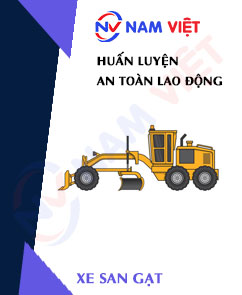
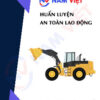





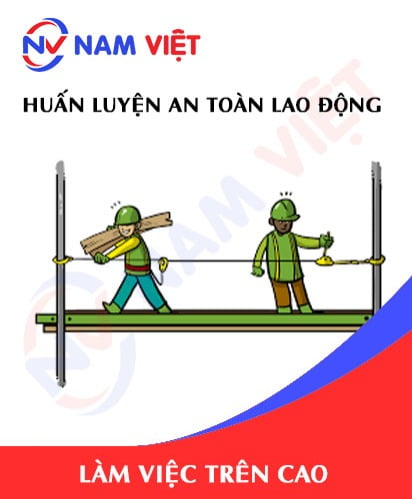

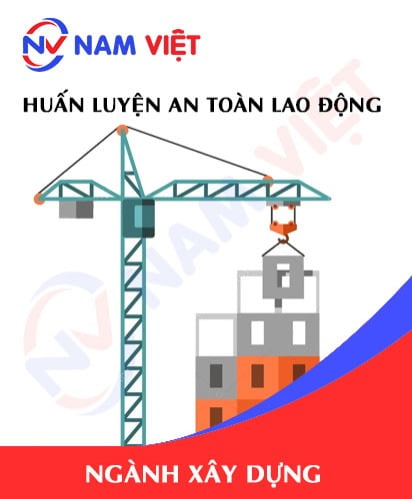
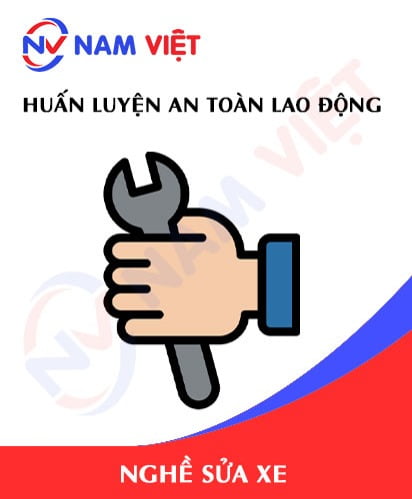


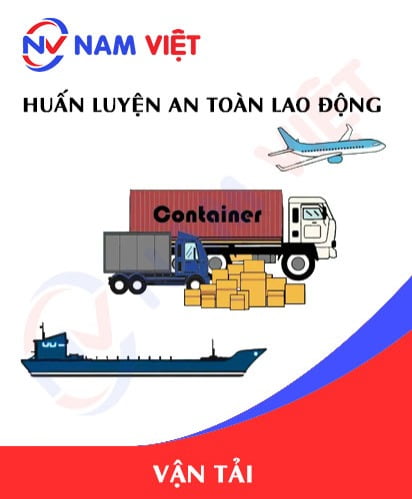
phanminhhang341
Very good safety training service